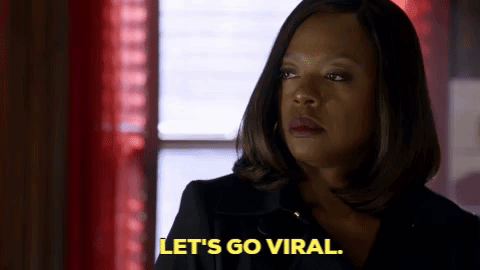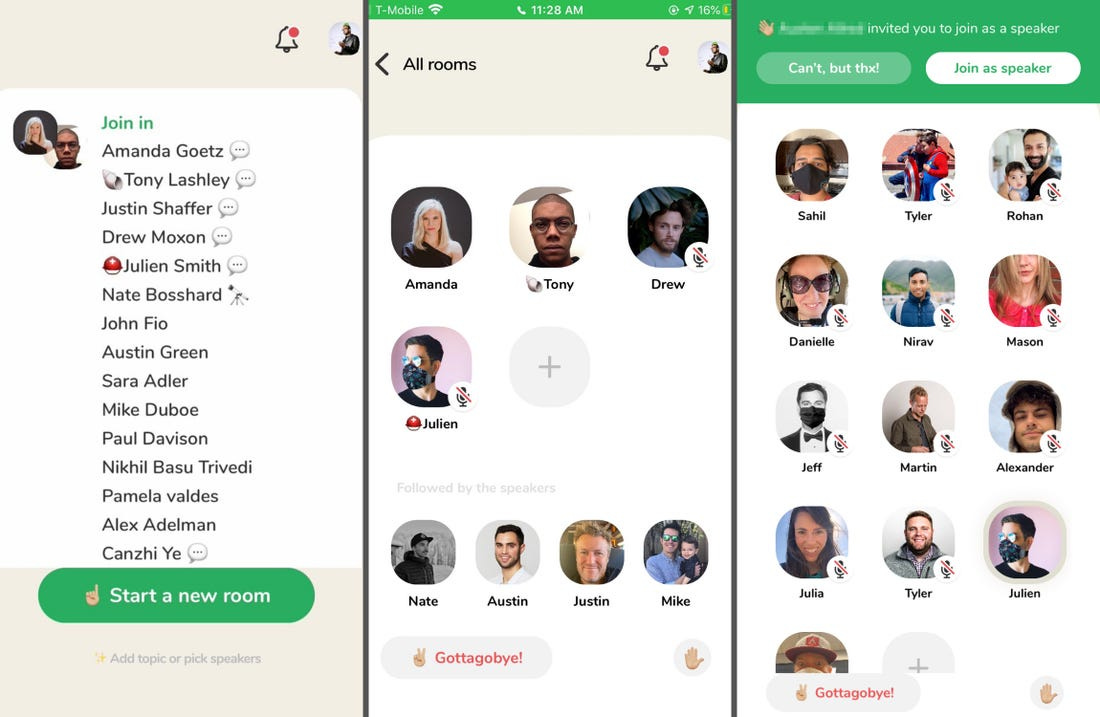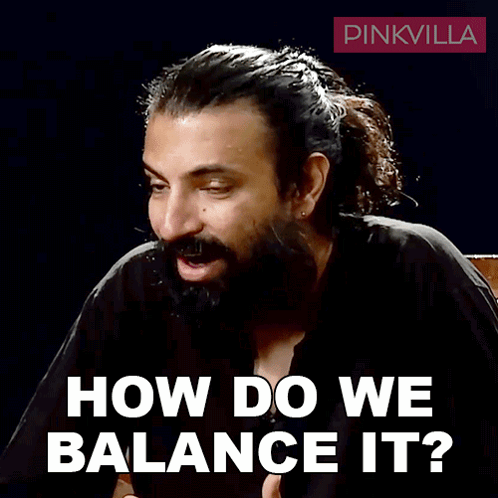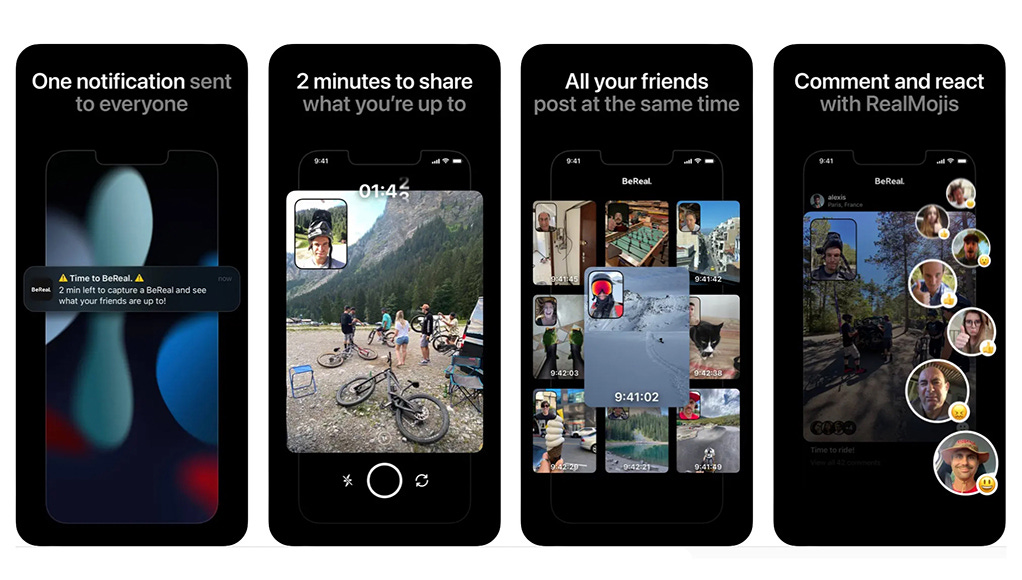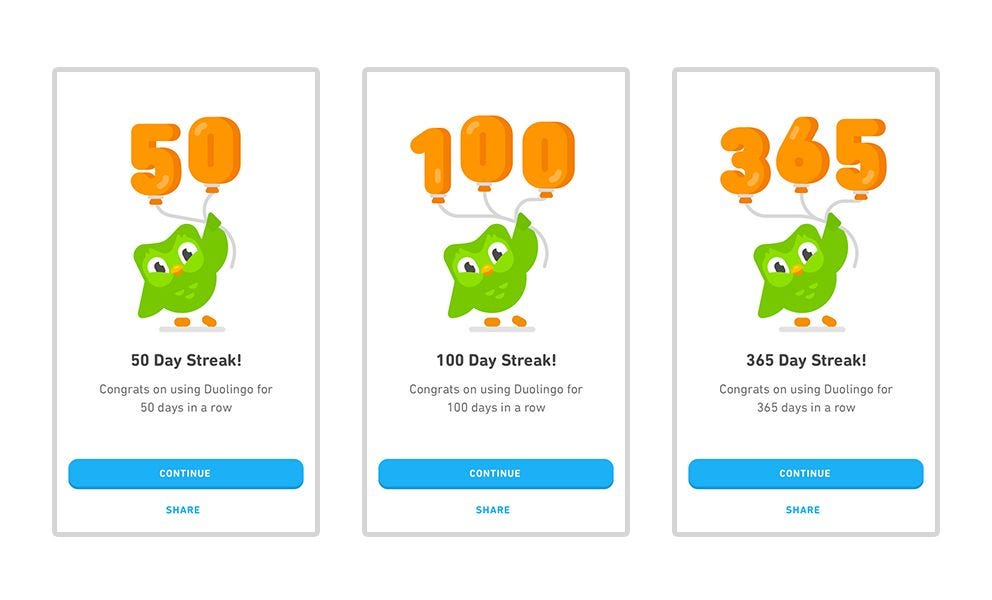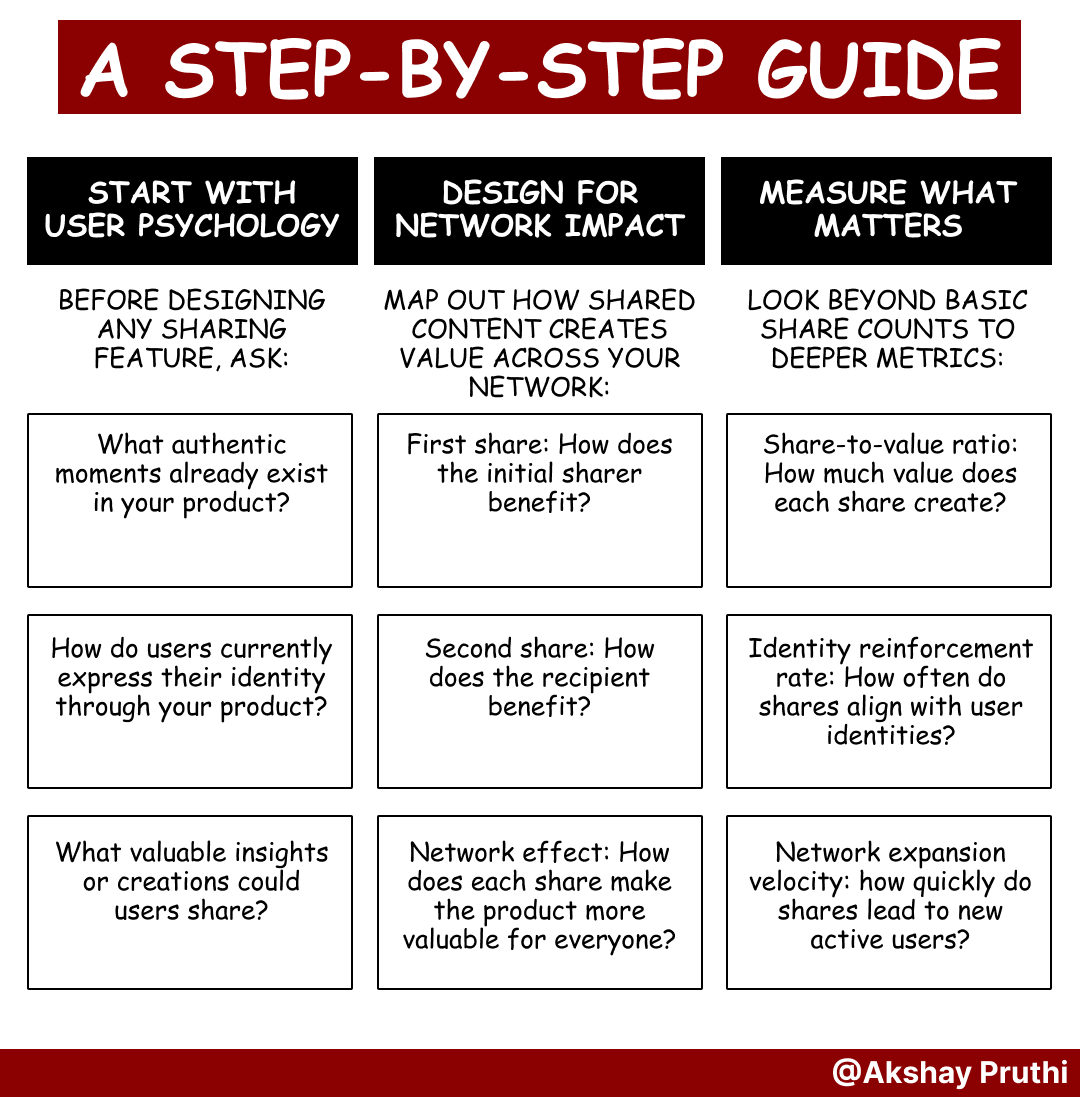How to Turn Users into Growth Engines?
The Psychology of Viral Product Design: A Product Manager’s Guide to Self-Perpetuating Success
Hey product enthusiasts! 👋
Last week, we cracked open the science of product stickiness and discovered why features like Spotify's daily playlists become irreplaceable habits. Your responses were incredible – especially about the "10X convenience" principle.
But as I read through your insights about behavioral patterns and habit formation, something fascinating caught my attention.
I was watching my nephew spend hours making Instagram Reels, and a deeper question emerged: If product stickiness is about aligning with existing habits, what drives us to develop entirely new behaviors like content sharing?
Picture this: A teenager who barely messages in family groups spending hours perfecting a 15-second Reel. What's the psychological engine behind this transformation from passive consumer to passionate creator? This question sent me down a three-week rabbit hole, exploring everything from cutting-edge neuroscience research to classic behavioral psychology.
Today, we're building on last week's insights about product stickiness to understand something even more fundamental: the psychology of why we share.
This isn't just another "how to go viral" guide – it's a deep dive into the hidden triggers that turn regular users into passionate advocates, casual browsers into content creators, and simple features into viral sensations.
What fascinates me most is how some products seem to defy our usual product stickiness rules. While most successful features need to align with existing habits (as we discussed last week), viral features often create entirely new behavioral patterns.
Understanding this contradiction – and the psychology behind it – could revolutionize how we think about product adoption.
What You'll Learn Today 📚
The core psychological drivers behind sharing behavior
The neuroscience of social sharing (new research findings!)
How successful products tap into basic human needs to create viral loops
Practical frameworks for building psychological triggers into your product
The Psychology of Sharing: Why We Really Share Things 🧠
At its core, sharing is deeply rooted in our evolutionary history. Our ancestors shared information about food sources, dangers, and opportunities as a survival mechanism.
Today, this same instinct drives our digital sharing behavior, but with fascinating modern twists.
1. The Basic Human Needs That Drive Sharing
Recent neuroscience research from UCLA's Social Cognitive Neuroscience Lab revealed something fascinating: The act of sharing activates the same reward pathways in our brain as food and money. But why?
Dr. Matthew Lieberman's research identifies three fundamental psychological needs that drive sharing behavior:
The Neuroscience of Sharing (It’s More Than Just Dopamine) 🧠
When we share something, three distinct neural networks activate in sequence:
The Evaluation Circuit: The anterior prefrontal cortex lights up as we assess the social value of information. This explains why we pause before sharing something important – our brains are literally calculating its social worth.
The Reward Anticipation Network: The nucleus accumbens activates not just when we share, but in anticipation of sharing. This explains why we feel excitement even before posting something on social media.
The Social Cognition System: The temporoparietal junction engages as we consider how others will receive our shared content. This neural activity explains our tendency to tailor content for specific audiences.
Dr. Emily Chen, a neuroscientist at Stanford's Social Media Lab, recently discovered that successful viral loops align with these natural neural patterns.
Her research shows that products that mirror this evaluation-anticipation-cognition sequence see sharing rates up to 3.7 times higher than those that don't.
2. The Psychology of Network Effects
The traditional view of network effects focuses on utility – more users make a product more valuable. But there's a deeper psychological phenomenon at play, one that taps into our most fundamental fears and desires.
The FOMO Loop: The Psychology Spark ➿
Remember early 2021? The world was still largely in lockdown, and suddenly everyone was talking about a new social network called Clubhouse.
But you couldn't just download and join – you needed an invitation. And not just any invitation – each user only had two to give out.
What happened next was fascinating. On February 1st, 2021, Elon Musk hosted a Clubhouse room with Robinhood CEO Vlad Tenev. The conversation, which only a select few could join, sparked a frenzy. Invitation prices on eBay soared to $125. People were literally paying to join a free app.
A neuroscientist at UCLA, explains what was happening in our brains:
"When we perceive that we're being excluded from something valuable, our bodies release cortisol – the stress hormone. This creates a physiological response that feels like actual pain."
The numbers tell the story:
January 2021: 2 million users
February 2021: 10 million users
Each invite holder averaged 16 requests from friends
Wait times for invites created what psychologists call "anticipatory anxiety"
But Clubhouse's genius went beyond simple scarcity.
They created what I call "layered FOMO":
The psychological impact was profound.
Users reported: "I started sleeping with my phone's volume on, afraid I'd miss an important room." "I felt physically anxious when I saw a room with industry leaders but couldn't get in." "Getting an invite felt like being chosen for an elite club."
This wasn't just clever growth hacking – it was a masterclass in psychological triggers. Clubhouse had tapped into what sociologists call "scarcity-induced arousal," where the perception of limited access heightens the perceived value of something.
But here's the fascinating part: even users who recognized the psychological manipulation still felt compelled to participate. A survey of 1,000 early Clubhouse users revealed that 78% knew they were being influenced by FOMO, but 89% still checked the app multiple times daily.
The aftermath of Clubhouse's rise provides crucial lessons about sustainable growth. When they finally removed the invite system, their active users dropped by 66% within three months. This reveals a critical truth about psychological triggers in viral growth: they must be balanced with genuine value creation!
Today, products like Telegram are taking more sustainable approaches to the FOMO loop:
Creating exclusive spaces within inclusive platforms
Using time-limited events instead of permanent barriers
Focusing on community-driven exclusivity rather than artificial scarcity
Understanding the neuroscience of sharing is fascinating, but the real magic happens when products align their features with these natural neural patterns.
Let's explore how today's most successful products create viral loops by tapping into fundamental human needs.
How Successful Products Tap Into Basic Human Needs 🎯
The Social Capital Engine: A Modern Day Status Game
Remember trading baseball cards in school? I certainly do. The most valuable cards weren't just rare – they gave us status, stories to tell, and a way to connect with others. That same psychological drive – to acquire and share valuable social currency – powers many of today's most successful viral products.
The Spotify Wrapped Phenomenon: A Masterclass in Social Architecture
December 2023. My Twitter feed suddenly transformed into a festival of Spotify Wrapped shares.
But why? What makes millions of people eagerly share their listening habits year after year? The answer lies in how Spotify masterfully taps into multiple human needs simultaneously.
It's not just about music – it's about identity. When Niharika, a product manager at a tech startup, shares her top artists dominated by indie rock bands, she's not just showing her music taste. She's telling the world: "This is who I am. I'm discovering new artists. I'm culturally aware." It's a carefully curated window into her identity.
But Spotify takes this further. They understand that raw data isn't inherently shareable. Instead, they transform personal listening habits into a narrative. "You're in the top 0.1% of Taylor Swift listeners" isn't just a statistic – it's a badge of honor, a conversation starter, and most importantly, a story worth sharing.
The timing is equally crucial.
By releasing Wrapped in December, Spotify taps into our natural tendency for year-end reflection. They've turned personal data into a cultural moment, a shared experience that feels incomplete if not shared.
The BeReal Revolution: Authenticity as Social Currency
While Spotify Wrapped succeeds through careful curation, BeReal took the opposite approach – and succeeded spectacularly. In a world of filtered perfection, BeReal tapped into a growing hunger for authenticity.
The genius lies in its constraints.
When that daily notification hits, users have two minutes to capture their moment, whatever they're doing. It could be a mundane desk lunch or an exciting concert. The brilliance? Both are equally valid, equally shareable.
This transforms the traditional social media anxiety of "Is this interesting enough to post?" into "This is my moment, whatever it might be."
The result? A staggering 73% daily active user rate.
LinkedIn's Professional Identity Loop
LinkedIn offers perhaps the most sophisticated example of turning professional identity into a viral engine. Watch what happens when someone changes their job title.
The congratulatory messages pour in, visibility spikes, and connections expand. But there's something deeper at play.
Every job change announcement, every work anniversary celebration, every skill endorsement taps into our fundamental need for professional recognition.
LinkedIn has turned career milestones – previously celebrated only within office walls – into widely shared moments of professional pride.
They've also mastered what I call the "success sharing loop."
When professionals share their wins, they're not just broadcasting achievements – they're creating aspiration. Others see these success stories and feel compelled to share their own, creating a self-perpetuating cycle of professional storytelling.
(By the way, I share my own experiences in product management, development, and other insights on LinkedIn too - do check it out if you're interested in more hands-on product wisdom!)
The Duolingo Effect: Gamifying Social Proof
Duolingo's recent transformation from a simple language learning app to a viral sensation deserves special attention.
They've done something remarkable: turned learning consistency into social currency.
Their streak system isn't just about maintaining daily practice – it's about creating shareable moments of commitment. When someone maintains a 500-day streak, they're not just learning a language; they're telling a story of dedication that others want to emulate.
But Duolingo's masterstroke was their TikTok presence. Their mascot's playfully threatening persona has become a cultural phenomenon, with over 6 million followers. They've turned a language learning app into a source of entertainment, memes, and shareable content – all while staying true to their core mission.
The Future of Social Product Design
These examples reveal a crucial truth: the most successful viral products don't just facilitate sharing – they create reasons to share. They tap into fundamental human needs for recognition, belonging, achievement, and identity expression.
As we look to the future, the products that will win aren't those with the most features or the biggest advertising budgets.
The winners will be those that best understand and serve these basic human needs, creating natural, authentic reasons for users to share their experiences.
Now that we've seen how successful products tap into human psychology, let's explore practical frameworks for building these insights into your own product...
Practical Frameworks for Building Psychological Triggers 🛠️
After studying hundreds of viral products and their psychological underpinnings, I've developed a framework I call VIRAL - five key elements that transform standard sharing mechanics into powerful viral loops.
The VIRAL Framework
Value-First Sharing
Remember the last time someone shared a Notion template with you? It wasn't just a share – it was a solution to a problem you had. That's value-first sharing. When Notion users share templates, they're not promoting the product; they're solving real problems for their peers.
Take Figma's component sharing system. It doesn't just enable sharing; it solves a genuine pain point for designers. This value-first approach led to their community growing from 1 million to 4 million users in just 18 months. The viral loop works because the value is immediate and tangible.
Identity Reinforcement
Consider why people share their Strava runs or Goodreads reading challenges. Each share is a brick in the wall of their public identity. But it goes deeper than just showing off achievements.
When someone shares their Strava activity, they're not just logging a run – they're reinforcing their identity as an athlete. When they share a Goodreads review, they're building their identity as an intellectual. Your viral loop should do more than enable sharing; it should help users build and reinforce their chosen identities.
Reciprocity Triggers
Dropbox's original referral program remains a masterclass in reciprocity. When you share storage space, both you and the recipient benefit. But modern reciprocity goes beyond simple referral bonuses.
Look at Calendly's approach: when you share your booking link, you're not just asking for someone's time – you're giving them the convenience of choosing a time that works for them. This reciprocal value exchange has helped Calendly grow to over 10 million users, largely through word of mouth.
Authentic Moments
BeReal's success teaches us an important lesson: authenticity can be more powerful than perfection. Your viral loop should capture and amplify authentic moments, not just polished achievements.
Think about how Slack's emoji reactions work. They're not just engagement features; they're micro-moments of authentic expression that make workplace communication more human. These small but genuine interactions create thousands of viral touch points every day.
Low Friction, High Impact
The best viral loops feel effortless but create meaningful impact. When you share a Loom video, it takes seconds to create but can save hours of back-and-forth emails. This ratio of low effort to high impact is crucial for sustainable virality.
Implementing the Framework
Wrapping Up
Building effective viral loops isn't about growth hacking or psychological manipulation. It's about understanding fundamental human needs and creating features that naturally inspire sharing while delivering real value.
Your Turn 💭 What are some of the most memorable things you've shared recently? What made them so shareable? Drop me a note.
Until next week,
Akshay!
Further Reading 📚
"Contagious" by Jonah Berger
"Made to Stick" by Chip and Dan Heath
"The Psychology of Social Media" by Jonathan Haidt






